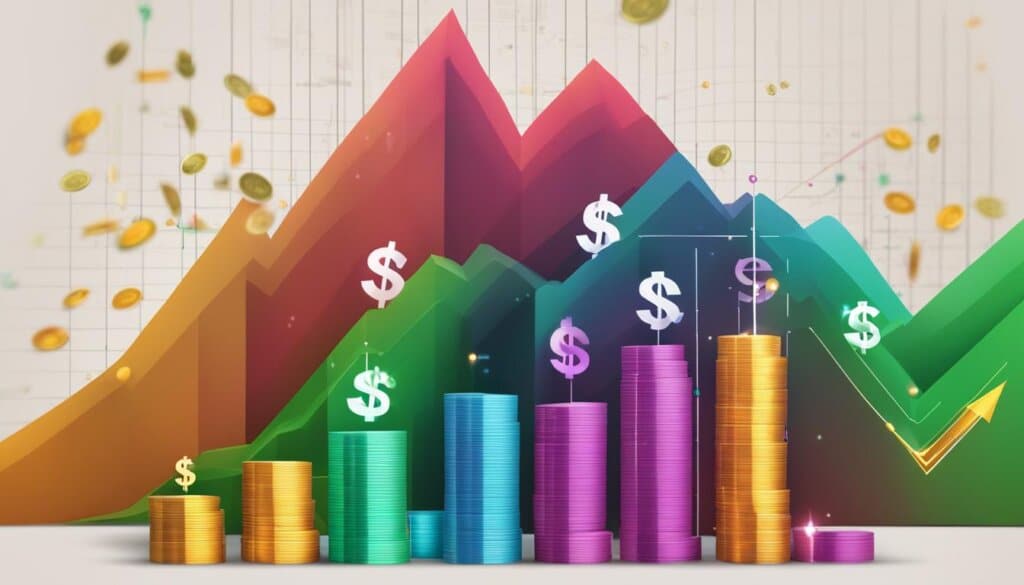Table of Contents
Welcome to our informational guide on the compound computing system. In this article, we will explore the technology behind compound computing and its applications. Whether you are a technology enthusiast or simply curious about this innovative system, this guide will provide you with valuable insights.
Compound computing system refers to a computing system that utilizes compound interest calculations. It involves the concept of compound interest, which is the interest on savings calculated on both the initial principal and the accumulated interest from previous periods. This concept can be applied to both investments and loans.
What Is Compound Interest?
Compound interest is the interest calculated on the initial principal amount, which also includes all of the accumulated interest from previous periods. It is also known as “interest on interest” and is a powerful tool for growing investments.
When it comes to interest calculation, compound interest takes into account not only the original amount invested or borrowed but also the interest earned or charged over time. This means that as the interest accumulates, it is added to the principal, resulting in a larger base amount for future interest calculations.
The formula for calculating compound interest is:
Compound Interest = Principal x (1 + Interest Rate)^(Number of Compounding Periods)
This formula takes into consideration three key factors: the principal amount, the annual interest rate, and the number of compounding periods. The principal refers to the initial amount of money invested or borrowed. The annual interest rate determines the percentage of interest to be earned or charged each year. The number of compounding periods refers to how often the interest is calculated and added to the principal throughout the year.
Compound interest can work in favor of investors by significantly boosting investment returns over the long term. As the interest compounds, the growth accelerates, leading to exponential growth of the investment. Additionally, compound interest can provide a passive income stream as the interest earned continues to generate more interest.
However, compound interest can also have its drawbacks, particularly when it comes to debt. If someone is carrying high-interest debt, such as credit card debt, the interest charges can accumulate quickly due to compounding. This makes it more challenging to pay off the debt, as the interest keeps adding to the overall balance.
Overall, compound interest is a fundamental concept in finance that plays a significant role in both investment growth and debt management. Understanding how compound interest works can empower individuals to make informed financial decisions and leverage it to their advantage, whether it be through smart investments or effective debt repayment strategies.
Key Points:
- Compound interest is the interest calculated on the initial principal amount and includes accumulated interest from previous periods.
- It is also known as “interest on interest” and can lead to exponential growth of investments over time.
- The formula for calculating compound interest takes into account the principal, annual interest rate, and number of compounding periods.
- Compound interest can work in favor of investors by significantly boosting investment returns but can make debt more challenging to pay off due to the compounding effect.
How Compound Interest Works
Compound interest is a powerful tool for maximizing investment returns over time. Understanding how it works is essential for financial planning and wealth accumulation. The formula for calculating compound interest is:
P[(1 + i)^n – 1]
In this formula, P represents the initial principal amount, i is the annual interest rate, and n denotes the number of compounding periods. By raising (1 + i) to the power of n and subtracting 1, we can calculate the compound interest.
Let’s take a closer look at the impact of compounding periods on investment returns. Different compounding periods, such as annually, semi-annually, quarterly, monthly, and daily, can be used to calculate compound interest. The more frequent the compounding, the greater the amount of compound interest earned.
Here is a table illustrating the effect of compounding periods on a $10,000 investment with an annual interest rate of 5% over a 10-year period:
| Compounding Period | Total Future Value |
|---|---|
| Annually | $16,289.35 |
| Semi-annually | $16,393.74 |
| Quarterly | $16,432.85 |
| Monthly | $16,470.10 |
| Daily | $16,502.48 |
As seen in the table, the total future value increases as the compounding period becomes more frequent. This demonstrates the significant impact of compound interest on investment returns.
Compound interest is a key factor in generating exponential growth in investments. By reinvesting the accumulated interest over time, the returns can compound, leading to substantial wealth accumulation.

The Power of Compound Interest
Compound interest is not a linear growth. It has the potential for exponential growth, thanks to the inclusion of interest from previous periods. This compounding effect allows for significant investment returns over time. The power of compound interest lies in its ability to generate “interest on interest.”
Imagine you deposit $100,000 in an investment account with a monthly compound interest rate of 5%. Over the span of 10 years, your interest accumulation could reach about $64,700. This exponential growth is a result of the cumulative interest from each compounding period.
The concept of cumulative interest is crucial in understanding the power of compound interest. Cumulative interest refers to the total sum of all interest payments throughout the compounding periods. By reinvesting the interest earned, the account balance continues to grow, leading to even more substantial returns in the future.
The visual representation above illustrates the concept of exponential growth in compound interest. As time progresses, the interest earned in each period adds up, resulting in a steeper growth curve. This compounding effect can truly make a difference in long-term investments.
To fully grasp the potential of compound interest, it’s important to consider the long-term implications. While the initial growth may seem gradual, the exponential growth kicks in over time, leading to substantial investment returns. Whether you’re saving for retirement or building wealth, harnessing the power of compound interest can help you achieve your financial goals.
In the next section, we will explore the different frequencies of compounding and how they impact the growth of investments.
Compounding Period Frequency
Compounding periods play a crucial role in determining the frequency at which interest is added to different financial accounts. Savings accounts, certificates of deposit (CDs), and bonds each utilize specific compounding frequency schedules, offering unique benefits to account holders.
Savings accounts and money market accounts commonly employ daily compounding, ensuring that interest is added to the account balance on a daily basis. This frequent compounding frequency allows for faster growth of savings and maximizes the benefits of compound interest.
Certificates of deposit (CDs) provide different compounding options based on the account holder’s preference. CDs may offer the choice of daily or monthly compounding, allowing individuals to choose a compounding frequency that aligns with their financial goals.
Bonds, on the other hand, typically employ semiannual compounding. This means that the interest on bonds is added to the account balance twice a year, providing a regular boost to the investment value.
Loans, such as student loans and credit cards, also utilize compound interest to calculate the interest charged to borrowers. The compounding frequency for loans may vary depending on the lender, with some loans compounding interest monthly or even daily. This frequent compounding can lead to a significant increase in the total interest paid over the life of the loan.
The table below summarizes the compounding frequency schedules for savings accounts, certificates of deposit, and bonds:
| Financial Instrument | Compounding Frequency |
|---|---|
| Savings Accounts | Daily |
| Certificates of Deposit (CDs) | Daily or Monthly |
| Bonds | Semiannually |
Compound Interest: Start Saving Early
When it comes to building wealth and securing a comfortable retirement, one of the most powerful tools at your disposal is compound interest. Over time, compound interest can transform small, consistent savings into significant long-term growth. That’s why it’s crucial to start saving early and take advantage of the power of compounding.
Consider this example: if you were to save just $100 a month from the age of 20 to 65, with a 4% annual return compounded monthly, you could accumulate an impressive $151,550. Starting early and being consistent with your savings allows you to maximize the potential of compound interest for long-term financial security.
On the other hand, if you were to delay saving and start at age 50 with higher monthly savings but the same interest rate, you would only end up with $132,147. This highlights the substantial advantage of beginning early and giving your savings more time to grow. The longer your money has to compound, the greater the potential for long-term savings and investments.
By starting early, you can take advantage of the compounding effect, which allows your savings to generate earnings that, in turn, generate more earnings. Over time, this compounding effect accelerates your wealth growth and empowers you to reach your financial goals.
So, whether you’re saving for retirement, planning for a future expense, or simply looking to build long-term wealth, starting early and harnessing the power of compound interest can make a remarkable difference. Take control of your financial future by making consistent contributions to your savings and letting compound interest work for you.
Pros and Cons of Compounding
Compound interest has its share of advantages and disadvantages. On the positive side, it can be a powerful tool to build wealth over the long term. By reinvesting the interest earned, your initial investment not only grows but also generates more returns. This compounding effect can help you achieve your financial goals and secure a brighter future.
Another advantage of compounding is its ability to mitigate wealth erosion caused by inflation. As the cost of living increases over time, the value of money decreases. However, with compounding, your investments have the potential to outpace inflation and preserve the purchasing power of your wealth.
For borrowers, compounding can work in their favor if they make more than the minimum payment on their loans. By paying off more than the required amount, interest charges can be reduced, allowing borrowers to save money and become debt-free faster.
However, compounding can have its downsides. If you only make minimum payments on high-interest loans or credit card debts, the compounding effect can work against you. The interest charges can accumulate rapidly, making it difficult to pay off the principal and prolonging your debt repayment journey.
Furthermore, it’s important to note that returns from compound interest are subject to taxation. When your investments generate taxable returns, you’ll need to account for these earnings when filing your taxes. It’s important to consult with a financial professional or tax advisor for guidance on how to handle taxable returns effectively.
Lastly, the calculations involved in compound interest can be more complex compared to simple interest. Understanding the formulas and applying them correctly can be challenging for some individuals. It’s crucial to educate yourself or seek expert advice to ensure you’re accurately calculating and maximizing the benefits of compound interest.
By considering the pros and cons of compounding, you can make informed financial decisions that align with your goals and circumstances. Whether it’s harnessing the power of compounding to build wealth or avoiding the pitfall of accumulating debt, understanding this concept is essential for your financial success.
FAQ
What is compound computing system?
A compound computing system refers to a computing system that utilizes compound interest calculations. It involves the concept of compound interest, which is the interest on savings calculated on both the initial principal and the accumulated interest from previous periods. Compound interest can be applied to both investments and loans.
What is compound interest?
Compound interest is the interest calculated on the initial principal amount, which also includes all of the accumulated interest from previous periods. It is also known as “interest on interest” and is a powerful tool for growing investments. The formula for calculating compound interest takes into account the principal, annual interest rate, and number of compounding periods. Compound interest can work in favor of investors by significantly boosting investment returns over the long term. On the other hand, it can make debt more difficult to pay off due to the compounding effect.
How is compound interest calculated?
Compound interest is calculated by multiplying the initial principal amount by one plus the annual interest rate raised to the number of compound periods minus one. The result is then subtracted from the total future value. The formula for calculating compound interest is P[(1 + i)^n – 1]. Different compounding periods, such as annually, semi-annually, quarterly, monthly, and daily, can be used to calculate compound interest. The more frequent the compounding, the greater the amount of compound interest. Compound interest can significantly increase investment returns over time.
What is the power of compound interest?
Compound interest grows at an ever-accelerating rate due to the inclusion of interest from previous periods. This exponential growth allows for the potential of significant investment returns over time. For example, a deposit of 0,000 with a monthly compound interest rate of 5% can accumulate about ,700 in interest over 10 years. Cumulative interest is the addition of all interest payments throughout the compounding periods and can contribute greatly to overall investment gains. The power of compound interest lies in its ability to generate “interest on interest.”
What are compounding periods?
Compounding periods determine how often interest is added to an account. Different financial instruments, such as savings accounts, certificates of deposit (CDs), and bonds, utilize various compounding frequency schedules. Savings accounts and money market accounts commonly use daily compounding, while CDs may compound daily or monthly. Interest on bonds is typically compounded semiannually. Loans, such as student loans and credit cards, also utilize compounding interest, which may be compounded monthly or even daily. The more frequent the compounding, the greater the impact on the final amount.
Why is it important to start saving early with compound interest?
It is essential to start saving early to benefit from the power of compound interest. Even small amounts saved consistently over time can lead to significant growth due to compound interest. For example, saving 0 a month from age 20 to 65, with a 4% annual return compounded monthly, can result in 1,550. In contrast, starting at age 50 with higher monthly savings and the same interest rate would only yield 2,147. Starting early and being consistent with payments allows individuals to maximize the potential of compound interest for long-term savings and investments.
What are the pros and cons of compounding?
Compounding has several advantages and disadvantages. On the positive side, it can help build wealth over the long term, mitigate wealth erosion due to inflation, and work in favor of borrowers who make more than the minimum payment. However, it can work against consumers who only make minimum payments on high-interest loans or credit card debts. Returns from compound interest are also taxable, and calculating compound interest can be challenging compared to simple interest. Understanding the pros and cons of compounding is crucial for making informed financial decisions.












